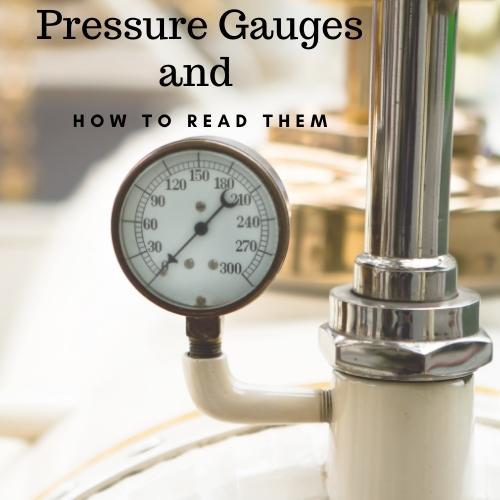Pressure gauge measure the pressure of a fluid and report it back to the user. They’re common in industrial settings where fluids need to be monitored, such as oil refineries and natural gas processing plants. In these settings, pressure gauge are often mounted on walls for easy visibility. Pressure is measured in various units including pounds per square inch (PSI), bars, and kilopascals (kPa). Arithmetic is involved when reading a pressure gauge because it is an instrument that measures differential pressures. If you understand standard deviation, then you can read a pressure gauge. Many gauges have multiple needles that operate at different scales, so the readings need to be interpreted appropriately. The procedure for reading a pressure gauge is as follows:
How to Read a Single Needle Pressure Gauge
The single needle gauge is the most common type of gauge. It has a single needle that moves up and down a calibrated scale. The scale is calibrated in units of pressure relative to atmospheric pressure (psi). The needle will generally be located in one of three areas: When the needle is resting in the “0” position, the system is at atmospheric pressure and no liquid is being conveyed. When the needle is resting below “0”, the system is under pressure and liquid is being conveyed. When the needle is resting above “0”, the system is over pressure, and excess liquid is being discharged to prevent damage to the system.
How to Read a Dual Needle Pressure Gauge
The dual needle gauge has two needles that move up and down a calibrated scale. The scale is calibrated in units of differential pressure relative to atmospheric pressure (psi). The two needles are usually located next to one another. One needle will be on the “0” position, and the other needle is usually in the “-” position. When the reading on the “0” needle is equal to the reading on the “-” needle, the system is at atmospheric pressure. When the reading on the “0” needle is less than the reading on the “-” needle, the system is under pressure. When the reading on the “0” needle is greater than the reading on the “-” needle, the system is over pressure.
How to Read a Manometer (Pressure Difference)
A manometer is a pressure gauge that uses a U-shaped vertical scale to measure pressure differences. The scale is calibrated in units of pressure relative to atmospheric pressure (psi). The bottom of the U-shaped scale will be marked with “0”, which is the pressure of the surrounding atmospheric air. Manometers are used in the process of vacuum distillation. Vacuum distillation is a vacuum-based distillation process used to produce high-quality essential oils. During vacuum distillation, a vacuum is applied at the top of the U-shaped scale. The vacuum pulls the liquid up the U-shaped scale due to the difference in the pressures.
Summary
A pressure gauge measures the pressure of a fluid and reports it back to the user. Pressure is measured in various units including psi, bars, and kPa. When reading a pressure gauge, it is important to note that gauges often have multiple needles that operate at different scales. The procedure for reading a pressure gauge is as follows: – Read the scale that the needle is pointing to. – Note the position of the needle relative to the scale. For example, if the needle is at the “4” mark and the scale is labeled “0-10”, the reading would be “40”. These three types of pressure gauge are commonly used instruments in industrial settings. It is important to note that they all measure differential pressures, so arithmetic is involved when reading a pressure gauge.


